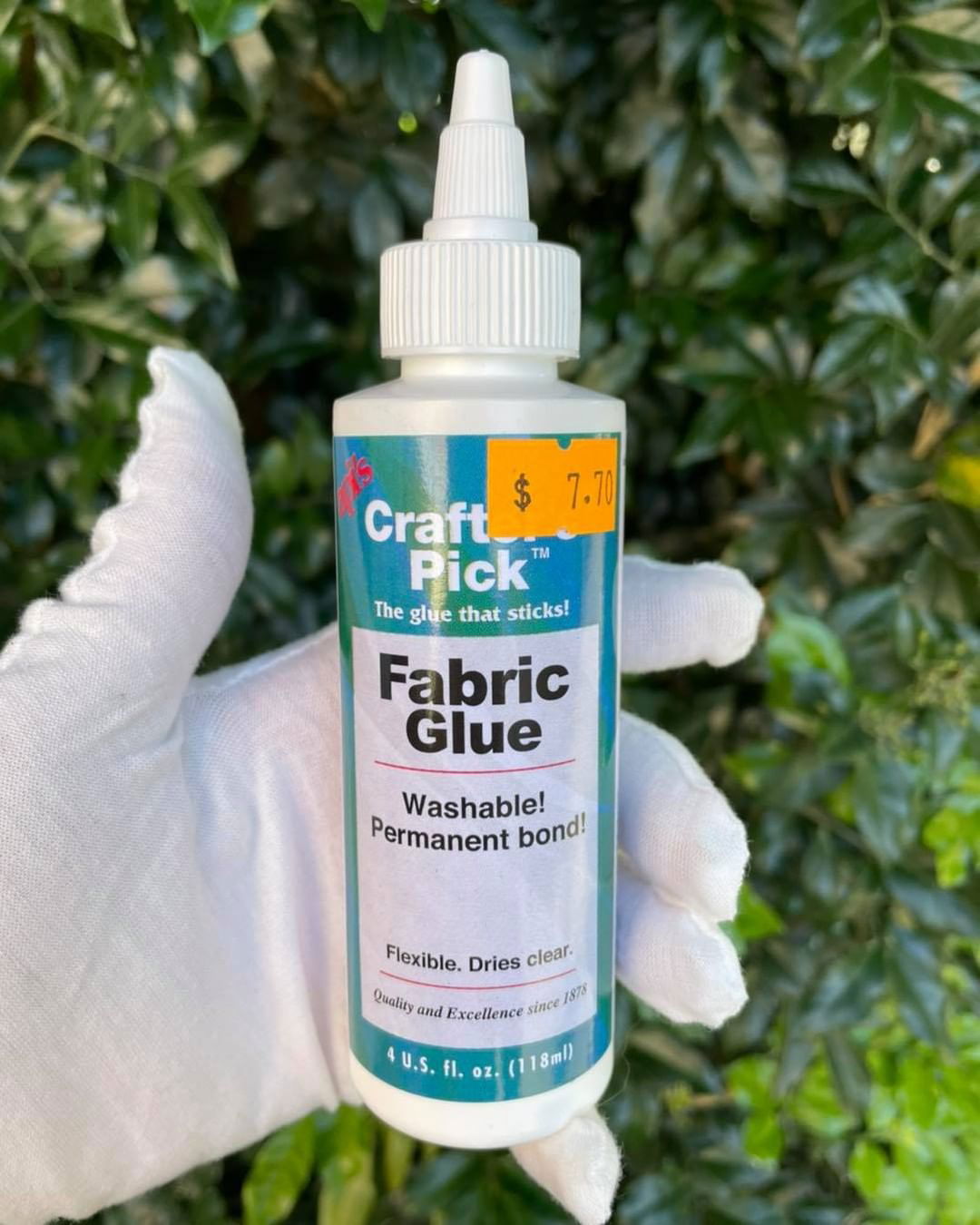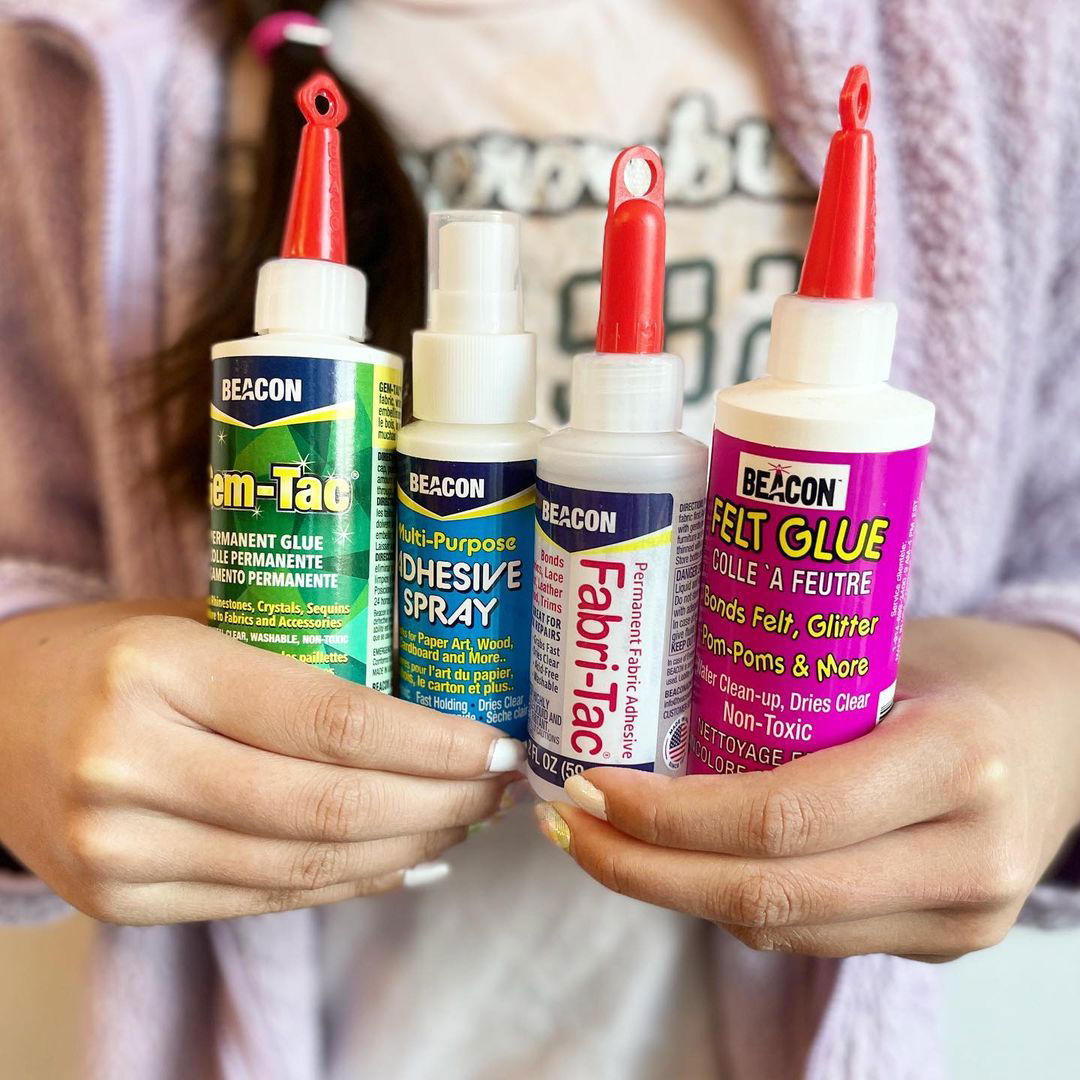When we have our clothes ripped off, the first and foremost solution that strikes our mind is that we need to sew them. But have you ever thought of glueing your clothes or fabric to fix it? If you have thought so, have you used the technique to get your clothes back to their original form? This article will tell you how to use fabric glue properly and in the correct technique. Go through the article and discover some exciting facts about glueing the fabric and the ways glue work on your clothes. This will also save your time as sewing is time time-consuming.

Can fabric glue be used instead of sewing?
It is safe to touch fabric glue with your hands. But this is not the ultimate solution for your ripped clothes. If it gets torn for a big area, you will have to sew it later anyway, so it lasts long. The method of glueing garments can help you with basting, putting back the displaced pins, torn pockets and other such minor issues.
You can use fabric glue with both thick and thin fabrics. Using fabric glue will add embellishment to different fabric materials. This can be used as a permanent solution for little tote bags, shoes and other leather items.
Glueing saves a lot of time. But you need to choose the perfect type of glue for your task. You must not use permanent adhesive when the ordinary solution is required and vice versa.
How to work with fabric glue?
The function of a fabric glue is just similar to any other adhesive. To use it, first, you need to make clothes clean and dry. Using it on wet clothes causes wrinkles.
Then you need to decide whether it is a permanent glue job or a temporary one. After that, mark the area over which you need to put your glue. Up next, line up your clothes and then apply the glue. Keep something heavy on the clothes to pressure them so that the ripped parts get attached by the glue. Keep it under pressure for about 3 to 6 hours and, you are done. Avoid washing the cloth for 2-3 days.
Drying of fabric glue:
The drying of fabric glue is just like any other glue. Just apply proper pressure and wait patiently. You must make sure that you have not put glue on the area that's not defective. Doing such can cause stains in the good part of the cloth.
Fabric glue can lead to staining on the cloth. You must make sure that fabric glue does not get stuck to unnecessary places on the fabric as it can tear up a new portion of the cloth. The next thing you must keep in mind is to apply the right amount of pressure and the right amount of glue on the right spot. You must also level the glue flat after applying them. For synthetic fabric, try to use a stretchable and flexible adhesive.
Types of fabric glue:
There are mainly two types of fabric glue. These are temporary and permanent glue. The permanent adhesives last very long and maybe for a lifetime. They are waterproof, due to which they prevent fabrics from falling apart, keeping the bond very strong. The temporary version of fabric glue does not hold the fabrics for a lifetime. They get washed away quickly and do not leave any stain behind when put in a washing machine. This is not the case with permanent glue. You must read the instructions written by the manufacturer on the glue box before purchasing it.
Not all of the fabric glues do the work of holding during the wash. Those are not meant for that purpose. Some sewing tasks require holding the pieces of fabrics together for a short time, and then the cloth is sewed while the portions to be sewed together are held in a place by fabric glue. After the cloth is sewed, the fabric glue has no use. In this case, a temporary fabric is used as its stain can be removed easily. Stains of permanent glues do not wash away easily. For fixing natural fabrics, you must use thicker glues. This prevents the tangling and gathering of the glue.

Fabric glue instead of sewing.
The fabric glues are an excellent alternative today as sewing is pretty time-consuming. It acts as your extra sewing tool. You can not construct the whole dress with fabric glue. They only serve as a solution to the problem of clothes getting ripped. You will have to perform some sewing to make your fabric last longer definitely.
You can use fabric for sewing purposes when you are attaching the pockets. The glue holds the pocket in a place where you want to sew it. You can use glue in scout batches to fix them well in their places. Also, in areas where you require a temporary hem, you can use fabric glue. You can use fabric glue in place of pins. Pins delay your work and demand you to start and stop repeatedly.
Conclusion
We hope you get high value through the article and got to know the exact process of gluing fabric. Along with this, you also get to know the processing and consequences of gluing fabric. Make sure you always follow the exact process while gluing as it is very important to follow the process.

